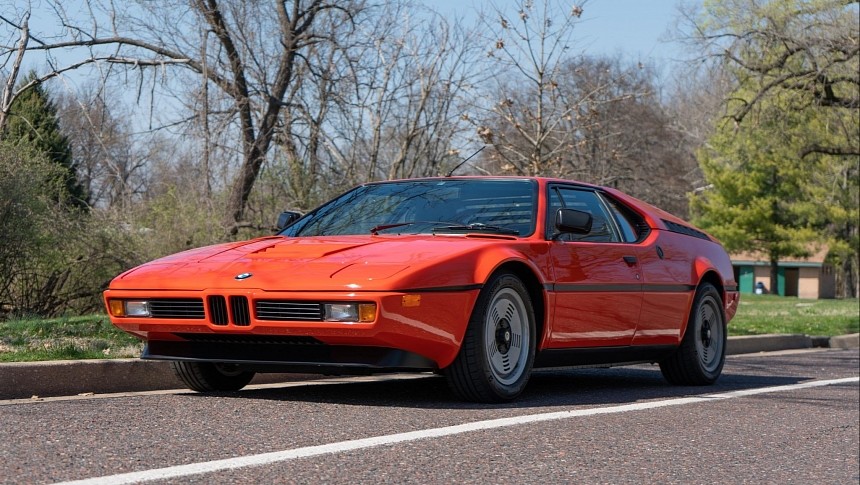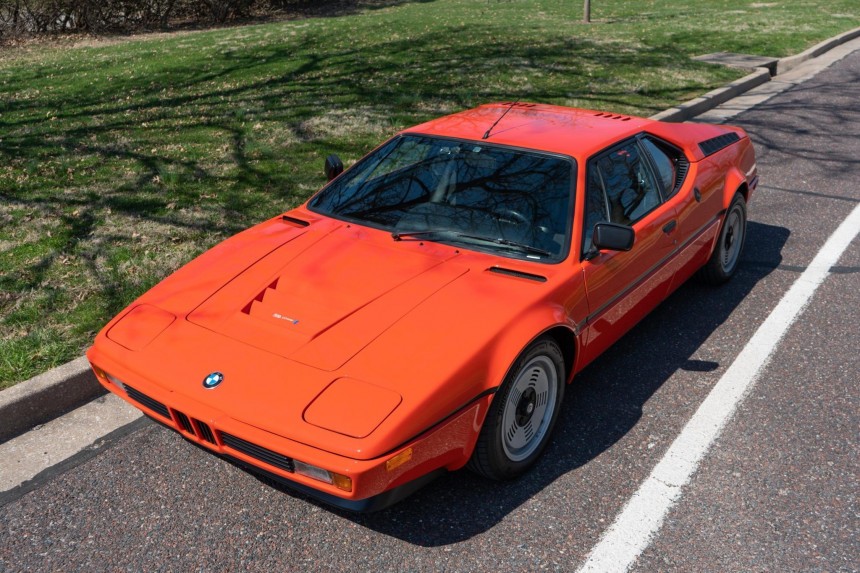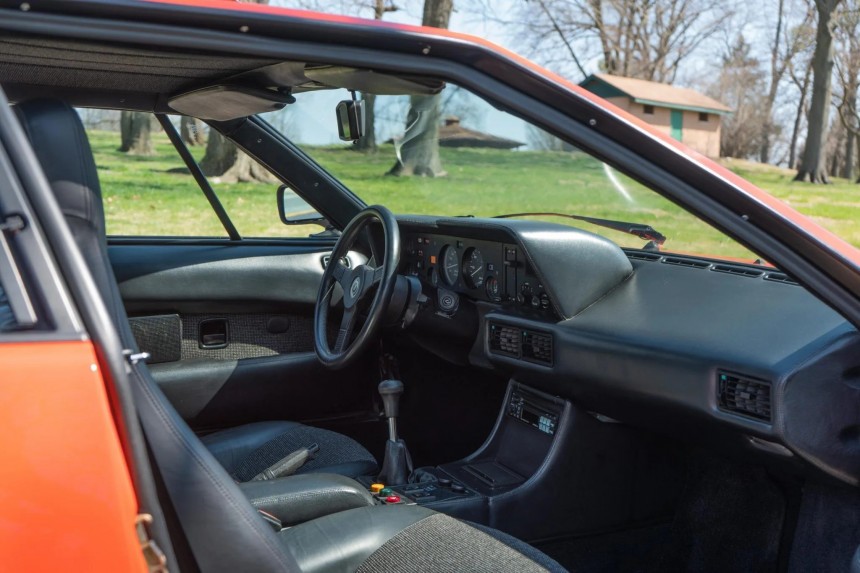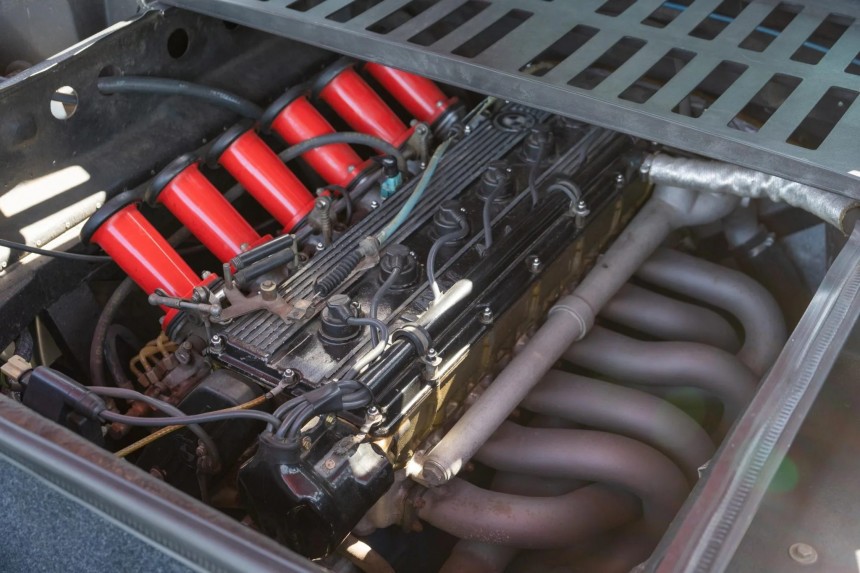Once upon a time, BMW's M division stood for Motorsport. It was a petrol-infused dream of racing cars for the road. Nowadays, you can find the once sought-after badge on front-wheel drive econoboxes, and it means nothing more than an appearance package. But let's take a quick trip down memory lane and see where this performance brand began.
First of all, I should say that I may seem a little harsh in my comment about the M badge being slapped on almost everything nowadays. But it's true. You will find a lot of cars with the M-Pack option ticked, but I'm sorry, that doesn't make your diesel 3 Series an M car.
Now, it's time we get to the car at hand, the car that started the BMW M division's road-going madness – the BMW M1. Before taking a look at the car itself, we should take a quick peek at how it came to be. The M division was born in 1972 at the hands of Bob Lutz – a guy responsible for a lot of enthusiast cars.
Back then, a lot of BMW models were going racing. But, it was kind of a mess, as there was no central 'brain' to manage everything. Thus, Bob Lutz employed ex-Le Mans racer Jochen Neerpasch, and the pair created a racing subsidiary focused on racking up wins using modified BMWs – and that's what they did. In 1973, BMW took the win both in the manufacturers and drivers title in the European Touring Car Championship with the 3.0 CSL.
While the 3.0 CSL is an absolute work of art, and I would do unspeakable things to even sit in one, it was starting to fall behind because it was a big fat car, and making it competitive was proving to be quite difficult. So, Motorsport had the idea to make a purpose-built race car from the ground up.
This brand-new speed machine would be directly aimed at Porsche, specifically the Group 5 racing monster called the 935. But there was a problem. Manufacturing and development proved to be a little too much for the Bavarians, so the task was handed over to Lamborghini – so, it's safe to say, even before its inception, this was on track to be a pretty amazing car.
So, work began, and soon, the cars were ready. I say 'cars' and not 'car' because the model came in three configurations. All of them had a tubular steel frame with the power plant being placed in the middle, but the engine would come in three different variants. First off, we have the Group 4 configuration, which produced 470 hp (477 ps), a Group 5 iteration with a monstrous 850 turbocharged horsepower (862 ps), and then the road car.
The racing variants were painted white with the Motorsports division's signature colors. Fun fact, those three colors were a combination of blue and white from the Bavarian flag, with red that came from a partnership with Texaco, which eventually fell through, but the colors remain with the badge to this day.
What was strange about the M1 is that the production version was created based on the racing cars, not the other way around, and today, we have an M1 from 1981 to use as ocular delight. This particular M1 is finished in orange, a popping color to showcase the fiberglass body designed by Giorgetto Giugiaro. That said, the looks were based on the 1972 prototype, called the Turbo, and later refined by the Italian.
Complementing the ultra-cool and exceedingly '80s design queues, like the front splitter, rear window louvers, the all-mighty pop-up headlights, and the overall boxy look, you'll find a set of 16-inch Campagnolo wheels with Bridgestone Potenza rubber.
Behind said wheels, you'll find a decisively German, complicated suspension setup, but a really good one at that. It has unequal-length A-arms, Bilstein gas shock absorbers that are height adjustable, and coil springs. Braking is handled by ventilated disc brakes on all four corners.
Moving on to the interior, surprisingly, it isn't as barebones as an eastern-European hospital, given its intended use. Everything is upholstered in black leather, but the seats have checkered cloth inserts. The comfort equipment consists of air conditioning, power windows, and a CD player - neat stuff. If you are lucky enough to get the chance to sit in an M1, you will find a three-spoke steering wheel which fronts a 180 mph (290 kph) speedometer and a 9,000 rpm tachometer.
Now, it's time we get to the power plant of this petrol-burning rocketship. It is powered by an inline-six cylinder called the M88/1. It measured 3.5 liters (214 ci) in displacement; it had dual overhead cams, four valves per cylinder, Bosch fuel injection, and individual throttle bodies. All of this added up to a really impressive 277 hp (281 ps). All of that oomph is sent to the rear wheels via a limited-slip differential and a ZF five-speed manual gearbox.
But, there is one more interesting thing about the power plant. It is mounted perfectly vertical. You might ask yourself, well, why is that impressive? It's impressive because it is a big straight-six, so making it fit proved to be a challenge. Why did they do that? Well, BMW normally mounted their engines at a 30-degree angle. That placed the exhaust underneath the cylinder head, and, during the sustained stress and heat from racing, it would obliterate the head.
The M1 was in production for two and a half years, and during that time, 400 road cars were produced. That makes it as rare as an SUV that I actually like. This scarcity translates to a pretty hefty price tag. But, if you have pretty deep pockets, this particular M1 is up at auction in Wildwood, Missouri. It currently sits at an eye-watering 300,000 dollars with seven days left on the auction. It has 18,000 miles on the clock (29,000 kilometers), and it comes with service records, a clean Carfax report, and a clean Mississippi title.
Now, it's time we get to the car at hand, the car that started the BMW M division's road-going madness – the BMW M1. Before taking a look at the car itself, we should take a quick peek at how it came to be. The M division was born in 1972 at the hands of Bob Lutz – a guy responsible for a lot of enthusiast cars.
Back then, a lot of BMW models were going racing. But, it was kind of a mess, as there was no central 'brain' to manage everything. Thus, Bob Lutz employed ex-Le Mans racer Jochen Neerpasch, and the pair created a racing subsidiary focused on racking up wins using modified BMWs – and that's what they did. In 1973, BMW took the win both in the manufacturers and drivers title in the European Touring Car Championship with the 3.0 CSL.
This brand-new speed machine would be directly aimed at Porsche, specifically the Group 5 racing monster called the 935. But there was a problem. Manufacturing and development proved to be a little too much for the Bavarians, so the task was handed over to Lamborghini – so, it's safe to say, even before its inception, this was on track to be a pretty amazing car.
So, work began, and soon, the cars were ready. I say 'cars' and not 'car' because the model came in three configurations. All of them had a tubular steel frame with the power plant being placed in the middle, but the engine would come in three different variants. First off, we have the Group 4 configuration, which produced 470 hp (477 ps), a Group 5 iteration with a monstrous 850 turbocharged horsepower (862 ps), and then the road car.
The racing variants were painted white with the Motorsports division's signature colors. Fun fact, those three colors were a combination of blue and white from the Bavarian flag, with red that came from a partnership with Texaco, which eventually fell through, but the colors remain with the badge to this day.
Complementing the ultra-cool and exceedingly '80s design queues, like the front splitter, rear window louvers, the all-mighty pop-up headlights, and the overall boxy look, you'll find a set of 16-inch Campagnolo wheels with Bridgestone Potenza rubber.
Behind said wheels, you'll find a decisively German, complicated suspension setup, but a really good one at that. It has unequal-length A-arms, Bilstein gas shock absorbers that are height adjustable, and coil springs. Braking is handled by ventilated disc brakes on all four corners.
Moving on to the interior, surprisingly, it isn't as barebones as an eastern-European hospital, given its intended use. Everything is upholstered in black leather, but the seats have checkered cloth inserts. The comfort equipment consists of air conditioning, power windows, and a CD player - neat stuff. If you are lucky enough to get the chance to sit in an M1, you will find a three-spoke steering wheel which fronts a 180 mph (290 kph) speedometer and a 9,000 rpm tachometer.
But, there is one more interesting thing about the power plant. It is mounted perfectly vertical. You might ask yourself, well, why is that impressive? It's impressive because it is a big straight-six, so making it fit proved to be a challenge. Why did they do that? Well, BMW normally mounted their engines at a 30-degree angle. That placed the exhaust underneath the cylinder head, and, during the sustained stress and heat from racing, it would obliterate the head.
The M1 was in production for two and a half years, and during that time, 400 road cars were produced. That makes it as rare as an SUV that I actually like. This scarcity translates to a pretty hefty price tag. But, if you have pretty deep pockets, this particular M1 is up at auction in Wildwood, Missouri. It currently sits at an eye-watering 300,000 dollars with seven days left on the auction. It has 18,000 miles on the clock (29,000 kilometers), and it comes with service records, a clean Carfax report, and a clean Mississippi title.














